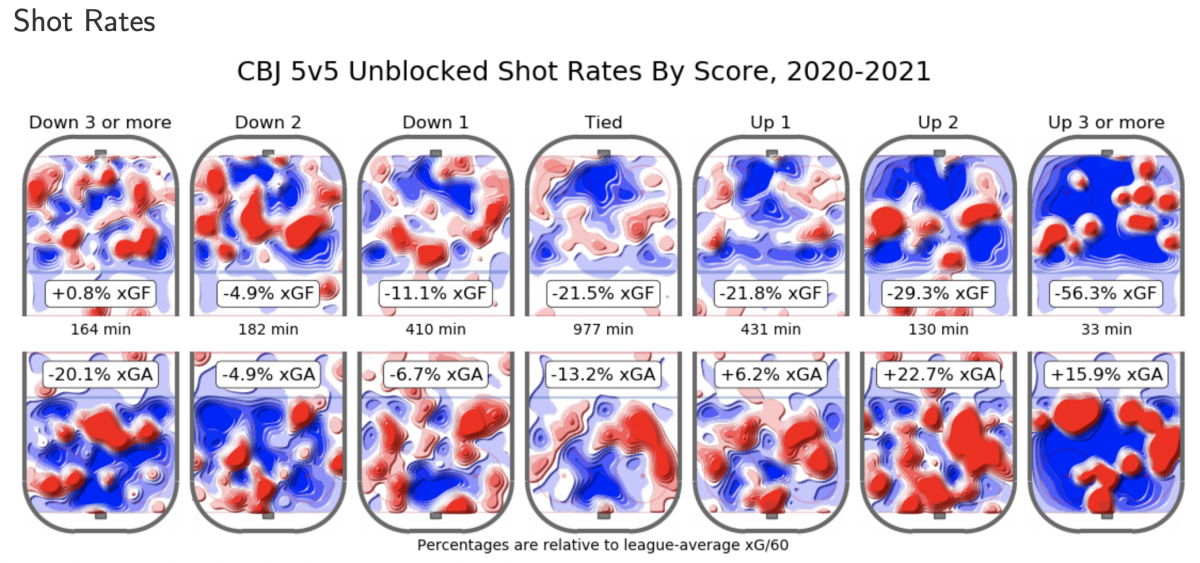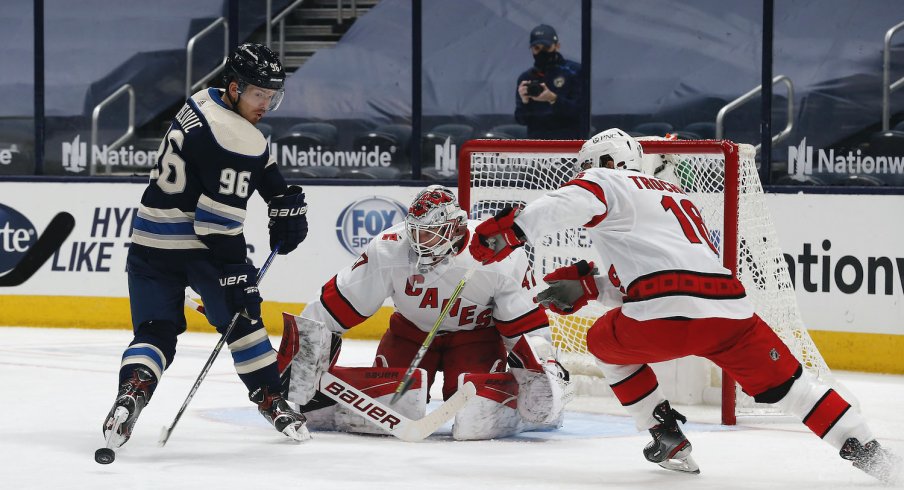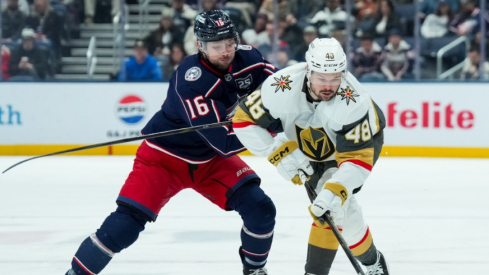Unfortunately, there are many a woe to pick at when dissecting the Blue Jackets' 2020-21 campaign.
But one narrative that has popped up in a variety of forms this season is “holding a lead.” Going into the Florida series that concluded Tuesday night, the Blue Jackets had scored the first goal in four of five games, and yet only won once.
Is this a thing? And, if the team can’t hold onto a lead, does it have the capacity to battle back from a deficit?
Let’s dig in to what’s true, what’s supposition, and what’s just maddening.
The importance of the first goal
The Blue Jackets have scored the first goal of the game 28 times this year. Of those 28 times, they have won 12 (including overtime and shootout wins), lost in regulation nine times, lost in overtime six times, and lost in a shootout once.
This also means that 12 of Columbus’ 15 wins have come off a game when it scored first.
So, for this team at least, scoring first is certainly a helpful practice. And, if it doesn’t happen, it seems like a steep hill to climb for this Blue Jackets squad to battle back.
About that…
Holding a Lead
How many times have the Blue Jackets led (or held serve, staying tied with their opponent) from the initial goal straight through to the end of the game? The answer is nine.
Further to that point, using data from Natural Stat Trick, in all situations, of the Blue Jackets’ league leading 2922:29 minutes of playing time, they’ve spent just 24.81% of that time (725:03) leading on the scoreboard. That puts them at twenty-fifth in the league in total time in the lead in all games played. And they are third in the league in time spent tied (39.89-percent, or 1165:50). Only Carolina and the Islanders have put in more minutes at evens this season.
For what it’s worth, that means that 35.37% (1033:36) of the time in games, the Blue Jackets have been trailing – chasing to draw even, which feels right to doomsdayers, but here’s a maddening wrinkle, they are tenth in the league in total time spent down one – just ONE – goal (524:43).
So sometimes Columbus has scored first and eventually won, but across the board, there’s had to have been some battle to end up in the win column at the end of the night, and more often than not, that time spent chasing the opponent.
So, how well have the Blue Jackets done that?
Battling Back
There’s a well known perception in sport: teams that are behind fight like heck to get back in the game, while teams that are in the lead often sit back and play a "prevent" game that is more focused on keeping the opponent from getting back in the game rather than trying to drive up its own score to widen the margin of victory.
The technical term is “score effects,” and unfortunately, this season, the Blue Jackets have struggled with every part of the concept.
The visualization below from HockeyViz displays a team’s offensive (top row) and defensive efforts (bottom row) as compared to league averages depending on score state. Blue marks areas where offense is occurring below league average, and red marks areas where offense is occurring above league average.

It’s certainly concerning to see that this season, the only time the Blue Jackets have started generating offense at a rate above league average (and a small one, at that) is when they are down by three goals or more. That’s certainly waiting until there’s a lot of hill to climb, and it doesn’t demonstrate a sense of urgency when returning to a tie or even taking over the lead is a realistic possibility. For comparison, last season, the Blue Jackets were plus-10.3% expected goals for when trailing by two, and plus-1.9% when down by one.
And boy, does this team sit back when it has a lead. So, while score effects are on full display when Columbus is actually ahead, there are no score effects to be seen to help the Jackets get back in the hunt when they trail.
Now let’s look at the other side of the ice. Defensively, if you are trailing, you want to be suppressing your opponents even more as you attempt to claw back into the game. Last season, the Blue Jackets did this regardless of the score state; other teams were always below league average in creating offense when Columbus was on the other side of the ice.
This season, however, while the Blue Jackets are still suppressing other teams with defense when they are trailing, if Columbus gets a lead, other teams are jumping the fence and creating more than average offense whenever the Blue Jackets lead by one goal or more.
There’s certainly no “why’s” to be found here – just a lot of “what’s.” The why’s might come on another day. But it's certain that this Blue Jackets team hasn’t seen the kind of results needed when it comes to getting, holding, or fighting for a lead…and that’s a big part of how you win hockey games.


